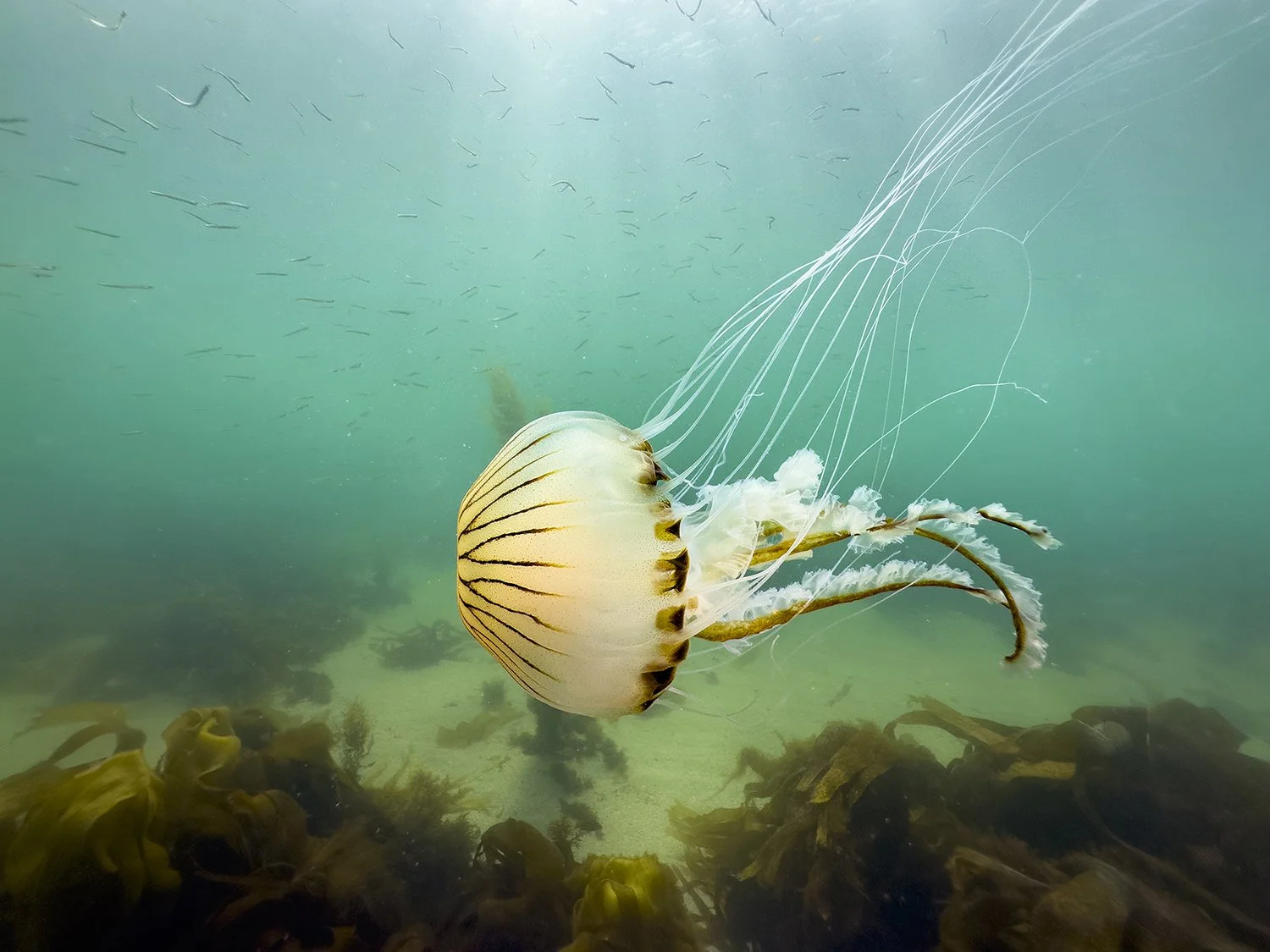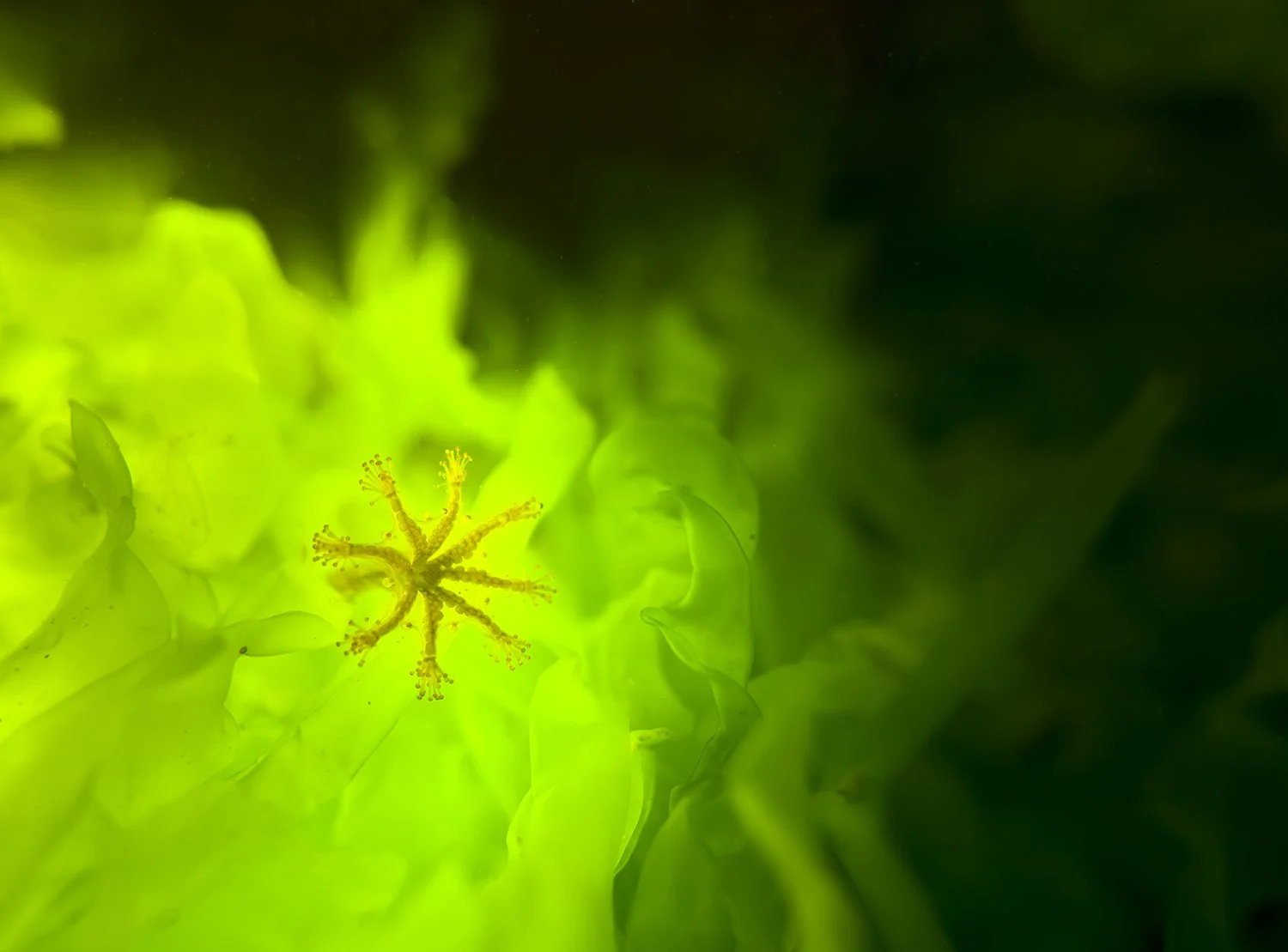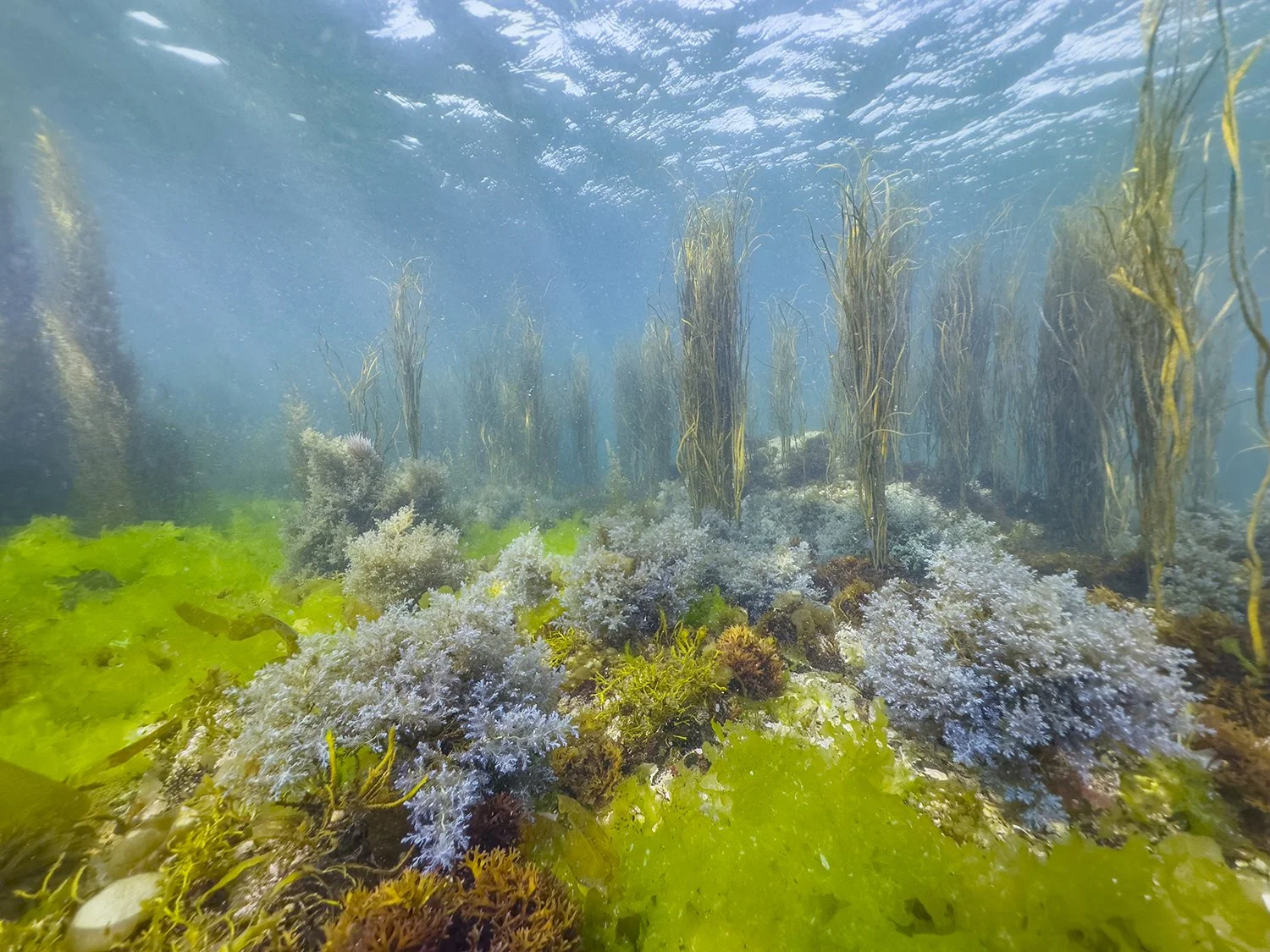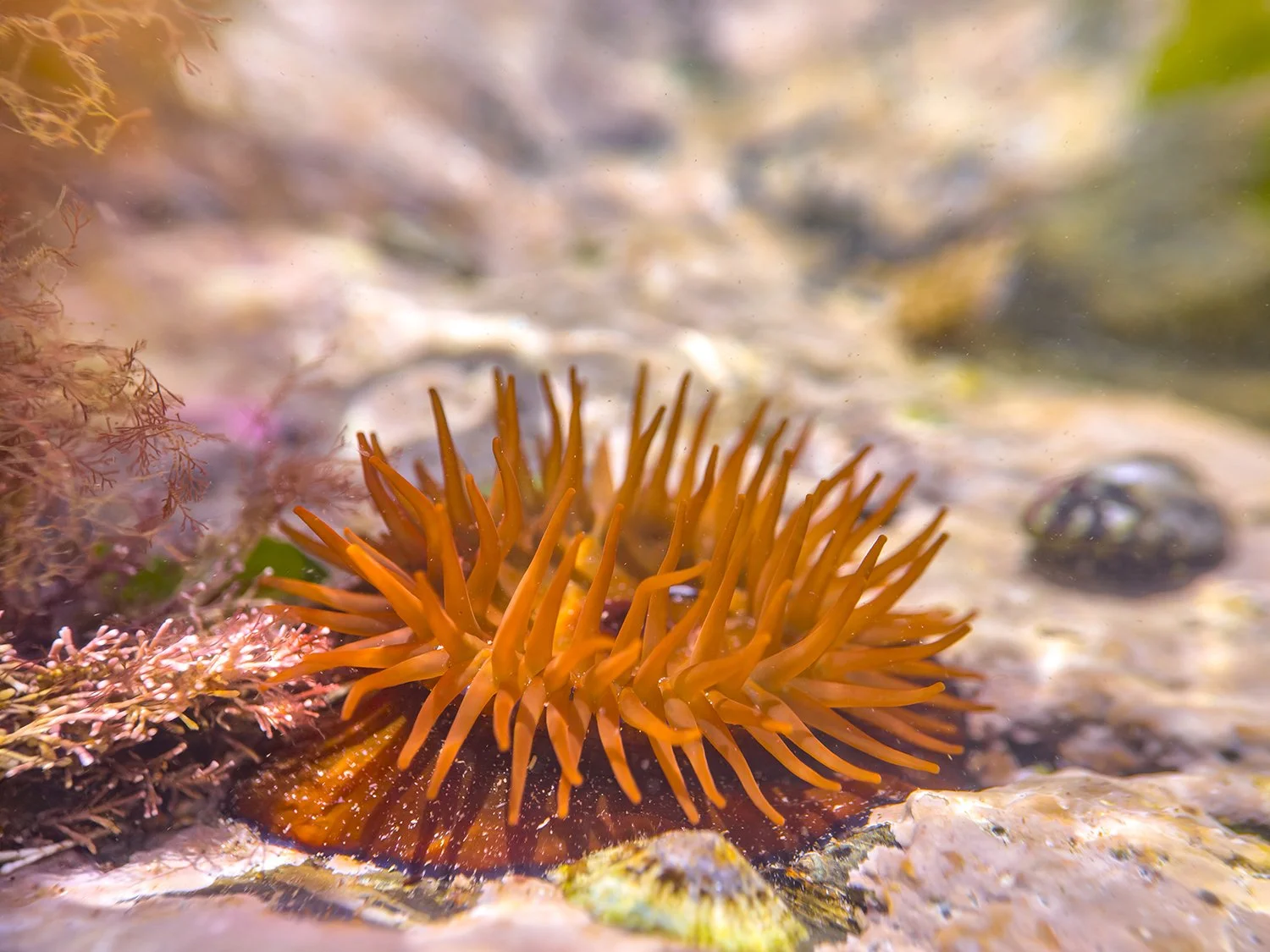DiveVolk Housing & Using Smartphones Underwater
An accessible and exciting approach to underwater imaging
A hermit crab taken with an iPhone 14 Pro Max and DiveVolk macro +18 lens
The world beneath the ocean surface is magical and photography is a powerful way to showcase its diverse environments and creatures. Historically, underwater photography has tended to be a somewhat niche pursuit, and not always accessible to many. Along with the challenges of shooting under water, the equipment tends to be expensive, specialist, and bulky. Yet times are changing. One key reason is the ever-increasing use of smartphones for photography and videography, alongside kit to use them underwater.
A compass jellyfish taken with an iPhone and DiveVolk housing and wide angle lens
One route to underwater imaging without specialist kit has been through action cameras, such as a GoPro. I’ve long used one and they’re easy to jump in the water with, feature good-quality video, and are more affordable than even most compact camera set ups. However, action cameras have major drawbacks: GoPro, for example, suffers in low light, has a fixed focus with nothing in focus closer than about 30 cm (without using an additional wet lens), and has only limited control over camera settings. Smartphones are an excellent alternative. Many of us own a recent smartphone, often capable of taking impressive photos and video, equipped with multiple lenses, which can focus both automatically or manually on different parts of a scene (including close-up and far).
A compass jellyfish taken with the iPhone main camera and DiveVolk housing
A kaleidoscope stalked jellyfish, taken with the DiveVolk macro +18 pro lens
Although I have a mirrorless underwater rig (using an OM1, which I still absolutely love), I’ve always liked small and portable set ups that are good for freediving, snorkelling, or even in shallow rock pools. Recently, I was lucky enough to have a few photos awarded in the Underwater Photographer of the Year (UPY) competition and choose as a prize a DiveVolk housing for my iPhone. DiveVolk were kind enough to send me not only the housing, but a full ocean kit with a wide-angle lens, their Macro 18+ Pro diopter, and more recently their new Bluetooth shutter. I’d been keen to try my phone underwater for a while (and already use it a lot above water), so this was perfect timing. I’ve been using the set-up for a few months with my iPhone 14 Pro Max.
Wide angle & macro photos from an iPhone 14 Pro Max and DiveVolk housing with wide and macro lenses
Before going on - a disclaimer. After I’d been using and posting online about the DiveVolk set up for a while, DiveVolk UK (or Light Balance Underwater Imaging) asked if I would be interested in being an Ambassador for DiveVolk UK. Although I rarely do this sort of thing, I was very happy to, since I’ve loved using this set up and genuinely think it’s brilliant. That said, I wont shy away from highlighting limitations or things that could be improved, nor endorse anything I don’t think is genuinely good.
The seaweed environment around Cornwall, captured with an iPhone and DiveVolk wide angle lens
Although many phones claim to be somewhat water-resistant, most of us wouldn’t want to deliberately dunk them in the sea without a housing. What makes DiveVolk housing special is that you have full use of the phone’s touch screen. Not only does this allow things such as being able to make emergency calls if in trouble at the surface, or using other apps for diving, but it also enables a suite of third-party apps for film and photography. In a nutshell, unlike with many other smartphone housings you’re not forced to use a particular app that goes with them, which are often not great, and you keep full control over the phone. This really matters, since to get the most out of smartphone photography/videography, you want control over as many settings as possible: shutter speed, ISO, white balance (though not aperture, since this is often fixed on smartphone cameras). For photography, there are many great apps and I use ProCamera. For video, many iPhone users above and below water use Blackmagic, which is free and excellent.
Close up of rainbow wrack seaweed
Having used the DiveVolk housing for a while, it’s been brilliant. The membrane is accurate and responsive, and besides sometimes needing a slightly firm press, I’ve had no issues. At times, having to stretch my hand across to press the screen to take a photo has been a bit limiting, and for macro, I sometimes inadvertently end up moving the phone and the focus point slightly. This is where the underwater Bluetooth shutter is really useful, allowing you to control everything on the phone with the touchscreen, but when needing to actually take a photo or start a video, simply squeezing the trigger.
A common cuttlefish photographed with an iPhone
The wide-angle lens is very good too and does an effective job of restoring some of the field of view that’s lost when placing the camera behind a flat port and correcting for distortions. There is still some distortion in the outer parts of the photo (especially photographing something on the seabed), but nothing too unusual. I often shoot a lot into the sun, and one thing the wide lens set up does sometimes have is reflections in the image from the housing. This would be the main thing I’d love to see improved in future lenses, but it’s a common problem with many lenses like it. Otherwise, as with most underwater photos, the wide lens with the ultrawide iPhone camera shines best when very close to subjects with classic ‘close-focus wide-angle’ shots.
A tiny sea slug filmed with an iPhone and DiveVolk +18 macro lens
For macro, I’ve been extremely impressed by the 18+ Pro lens. Made of solid glass and metal, it gives very sharp images and, at least to my eyes, with the standard 1x iPhone lens, some nice bokeh. On the 1x lens, I can take photos of things like small sea slugs, hermit crabs, or cushion stars. Given that my main phone camera has a 48-megapixel resolution, there’s scope to crop in too. For video, the results are especially impressive to the point where I’d use this in preference to the macro video on my main camera (and a lot more easily too)! Just as with action cameras, one of the main restrictions of smartphone photography is that, at present, there is no way of using strobes with a smartphone because they can’t be triggered. This seems like a problem that could be easily overcome though, especially since phones often have internal flashes already. So a strong video light or two is valuable, especially for macro.
A beadlet anemone, photographed with Divevolk housing and +18 macro lens with an iPhone 14 Pro Max
All in all, I’m excited about the possibilities of using smartphones underwater. Naturally, they come with limitations too, but recent, especially high-end ‘Pro’ models are capable of very good photos, and perhaps even more so impressive video. Perhaps this shouldn’t be surprising since the budget of a company like Apple or Google to develop camera technology on their phones must dwarf that of specialist camera manufacturers. Consequently, smartphone cameras have progressed immensely in recent years. They clearly have far smaller sensors and optics than something like a mirrorless, or even higher-end compact camera. However, this issue is sometimes exaggerated - after all, the sensor size of the main camera in a recent Pro iPhone (like the 14 or above) is bigger than that of the OM System (Olympus) TG7 camera, which is rightly very popular with divers and photographers especially for macro, and bigger than the sensor on a GoPro Hero 13. There’s much more to this than sensor size, of course, and modern smartphones have sophisticated computational photography that is partly designed to overcome issues of the physical optics; for better or worse - the strong processing is not to everyone’s taste but can be toned down in post. The images do sometimes benefit from delicate adjustments, so shooting in RAW is valuable. Overall, I’ve had fun using this set up and look forward to seeing what it can do going forward.
There’s a lot more to this subject, so let me know if you want to know more about it, including things like:
Considerations with the different cameras on smartphones (e.g. wide, ultrawide etc)
Best film and photo apps to use
Other Divevolk kit (domeport, video lights)
Editing phone photos
As mentioned above, I’m a DiveVolk UK Ambassador, so if you use the code ‘Stevens06’ on Light Balance Underwater Imaging you can get an 6% discount on DiveVolk kit.










